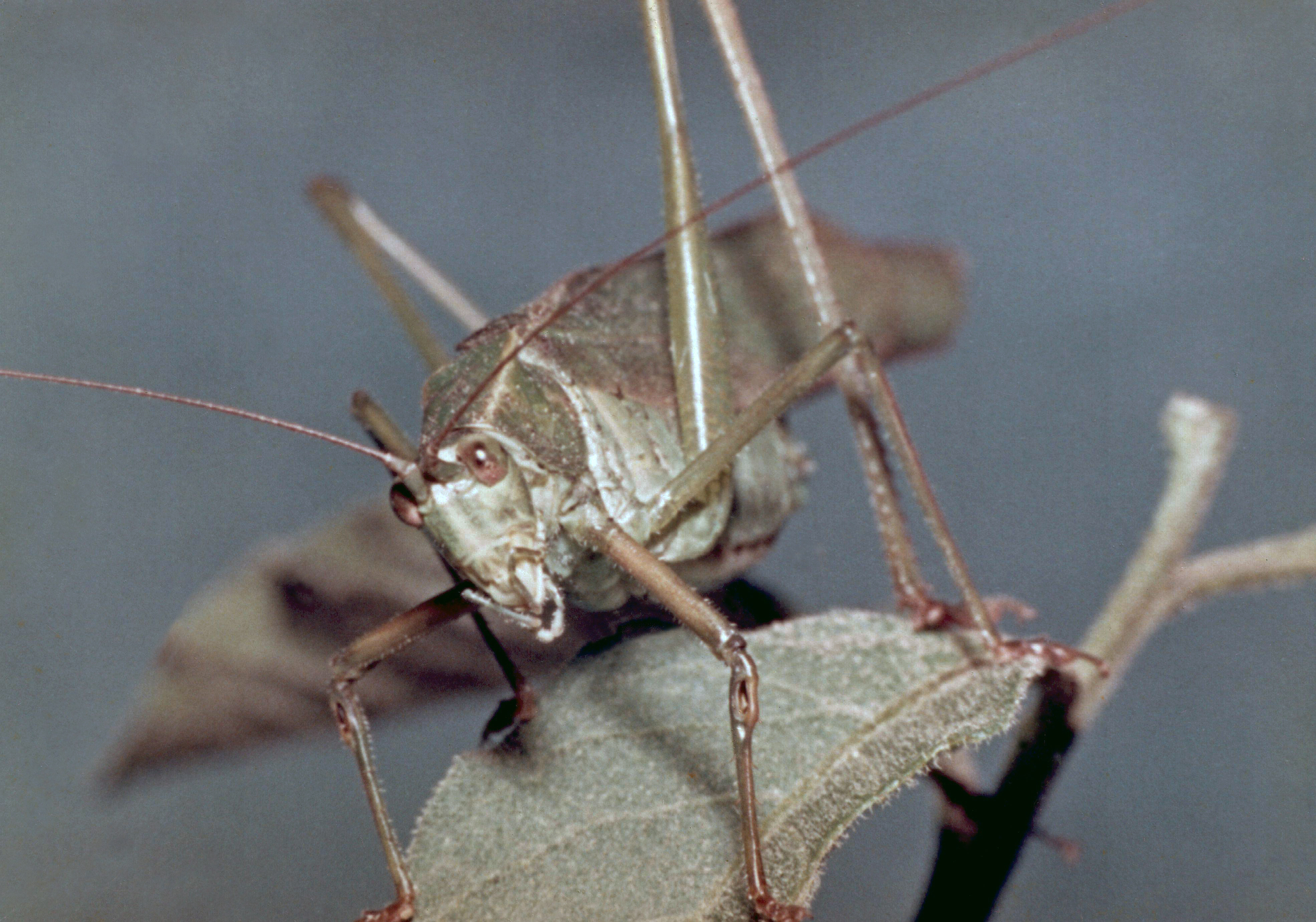I love this time of year. The world is thrumming with life. The crickets and grasshoppers, the cicadas and tree crickets all taking their turns to sing. The symphony will go on until that first hard frost when it shuts down all at once. But today is not that day. The weather is beautiful; the wild flowers are blooming; the bees are buzzing around the wildflowers; and the chorus rises and falls as singers take their turns.
In the afternoon, the first wave of cicadas starts in. At dusk, the next wave of cicadas chime in with their sustained and rhythmic songs. By nightfall when the cicadas get tired, the tree crickets take up the melody with a sustained background chorus. Field crickets chirp, and katydids and coneheads punctuate the soundscape with their scratchy ticks and buzzes.
One of the less vocal contributors is the fork-tailed bush katydid (Scudderia furcata). Unlike many of his more vocal neighbors, this katydid’s strategy seems to be to fling out one to three raspy “tzit” notes and then wait for a few seconds before sending the next message. He tends to sit near the end of a branch while he’s singing, but he looks like just another leaf, so his green color and intermittent call make him hard to find. He’s not going to wait around for you to catch him, either.
Katydids are in the same order as crickets and grasshoppers. They have bodies similar to grasshoppers, but their antennae are much longer and thread-like, whereas the grasshopper’s antennae are much shorter and thickened. Katydids start singing in July, using their forewings to make their raspy call by scraping a rigid scraper on the right forewing against a cone-shaped file on the left forewing. They listen for a response with the hearing organs called tympana located on their legs. The wings are green, and the overall impression of the katydid at rest is of just another leaf.
This particular katydid is one of 250 species of katydids throughout North America, and one of several I am learning to identify by sound in the grass and trees on Owl Acres. The male is fairly large, measuring an inch and a half to an inch and three-quarters in length. His wings are green, and his body is green with patches of other colors which enhance his camouflage. He has a brown, horseshoe-shaped plate at the end of his abdomen. This gives him his fork-tailed appellation. Females have a brown ovipositor at the end of the abdomen. They lay flat white eggs in rows on leaves or tree bark which look a lot like seeds. The eggs overwinter and hatch in the spring, producing multicolored nymphs which feed on plant material. These katydids don’t generally harm the plants they feed on, but they seem to be fond of oranges and will bite into an orange, ruining it for commercial purposes. Speaking of biting, if you capture one, it may bite. Your chances of catching it though are slim so no worries. They can see and hear very well, and will detect you and fly away long before you can catch them.
Photo from Wikimedia.org by Ron Sterling. Alt text: Green, angular, grasshopper-like insect looks directly at the camera, allowing us to see the dark spot deep in its clear, compound eye. Fork-tailed Bush Katydid shares the summer space on Owl Acres with one of its cousins, Common Meadow Katydid.
